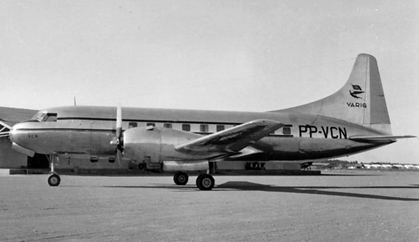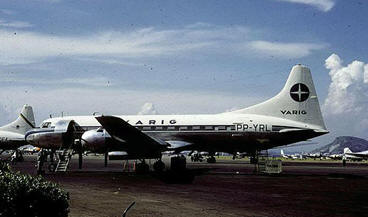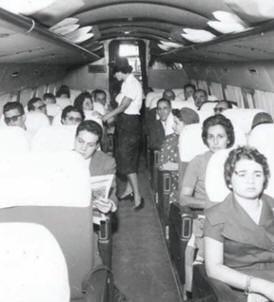|
Aircraft |
||||
|
|
Convair 240 operated most of VARIG's lines
during 50s and 60s. Convair 240 was one of the fastest planes in the
world. The exceptional 435 km/h speed was one of the decisive
factors in the decision to incorporate them into VARIG´s fleet: the
considerable reduction in flight time was a major point in a nation
with a territory as large as Brazil´s. VARIG had thirteen of these
airplanes, which it flew regularly between the major Brazilian
cities, Montevideo and Buenos Aires. Convair 240 was also the first aircraft
used by VARIG on "Ponte Aérea" (Air Bridge) Rio de Janeiro - São Paulo.
Unlike Douglas DC-3 and Curtiss C-46 aircraft that were used in
World War II, Convair 240 was specially designed for commercial
aviation, giving more comfort to passenger as pressurized cabin,
flying at high altitudes (with less turbulence) and lower noise.
Convair 240 also brought other innovations such tricycles landing
gear and reversible propellers. With Convair 240 VARIG inaugurated
the first concrete runway of Porto Alegre airport. After this
purchase, VARIG's pilots and mechanics went the USA for full
aircraft's courses.
After Real-Aerovias-Nacional airlines incorporation, in 1961, VARIG acquired more units
of Convair 340 and Convair 440, an improved version. First VARIG
received five units, PP-VCK, PP-VCN, PP-VCO, PP-VCP and PP-VCQ. At
the end of the 1950s, VARIG acquired eight more units, totaling
thirteen units: PP-VCR, PP-VCV, PP-VCW, PP-VCX, PP-VCY, PP-VCZ,
PP-VDG and PP-VDH. With the purchase of Real-Aerovias-Nacional,
in 1961, VARIG added to its fleet six Convair 340 and seven Convair
440.




|






